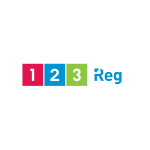How Important Are Bounce Rates and Conversion Rates?
For an online business to succeed, it’s essential to understand and improve the return and conversion rates. If your website has a high bounce rate, users aren’t interested in it, so they leave without doing anything. On the other hand, a high conversion rate means that your site is good at turning people who visit it into customers. Telsa Media, which offers Professional SEO Services and local SEO services, talks about essential ways to improve these metrics and make your website run better.
How to Understand Bounce Rate
- Details on how to figure out the bounce rate
- The number of people who visit your website but only look at one page is called your “bounce rate.” This measure helps you figure out how well your website is doing to keep people interested.
- Things that can cause a high bounce rate
- If your page loads slowly, is hard to navigate, has boring material, or needs a clear call to action, you may have a high bounce rate. Understanding these factors can help you devise better ways to keep people interested.
Ways to lower the bounce rate
- Speed up page loads:
- Why fast loading times are important
- When people browse the web, they expect a quick answer. Users may give up on a page before it’s fully loaded if it takes too long.
- How to Test and Improve Page Speed: Tools and Methods
- Tools like Google PageSpeed Insights can identify speed problems and offer ways to improve them. Techniques like compressing images, browser caching, and cutting down on server reaction time are important for making pages load faster.
- Improve the UX (user experience):
- Why navigation is important
- A well-organised website with easy-to-use access lets people quickly and easily find information. When navigation is good, bounce rates and interest go down.
- How to Make a Website Easy for Everyone to Use
- It’s best to keep the interface simple, use style patterns that people are already familiar with, and make sure that information flows naturally. Make sure that all users can access and understand your menu.
- Optimisation of content:
- What Engaging and Useful Content Does
- User interaction is built around content. If you have high-quality, helpful content tailored to your audience, your website’s bounce rate can significantly decrease.
- The best ways to layout and format content
- Use clear headers, short paragraphs, and bullet points to make the text easy to skim. Add pictures and movies to break up the text and make it more interesting.
- What Engaging and Useful Content Does
- Why navigation is important
- Why fast loading times are important
Techniques for Conversion Rate Optimisation (CRO)
- Call to action (CTA) that is clear:
- Why clear and compelling calls to action are important
- A clear and appealing call to action encourages people to take the next step: buy something, sign up for a newsletter, or reach some other conversion goal.
- Examples of Good Placements for Calls to Action
- CTAs should be placed above, below, and in the regular reading order of the page. Make them stand out by using colours that aren’t the same and text that is convincing.
- Using analytics to figure out how people use your site:
- How to Find Pain Points with Analytics
- With tools like Google Analytics, you can see where people leave your site. Look at the paths people take through your site to see what needs fixing.
- Changing plans based on information
- You can use the information to improve the user experience, change the content, and make the navigation better to meet your guests’ needs better.
- How to Find Pain Points with Analytics
- Why clear and compelling calls to action are important
Tests A and B:
- Why testing different parts of a website is essential
- Using A/B testing, you can compare two webpage copies to see which keeps visitors longer and encourages them to buy something.
- How to Test in A/B Mode
- Try making one change at a time, like testing different call-to-action words or colours, to see which ones positively affect people’s behaviour.
- Combining strategies for bounce rate and conversion
- How lowering the bounce rate can make conversion rates go up
- Reducing the bounce rate improves the user experience, making people more likely to convert. Your conversion rates can gradually increase as you change your navigation, page speed, content, and where you put your calls to action (CTAs).
- How lowering the bounce rate can make conversion rates go up
Final Thoughts:
By making intelligent changes to your website’s appearance, content management, and visitor interaction, you can lower its “bounce rate” and raise its conversion rate. Telsa Media tells companies to make these changes and monitor the results to improve their online presence. If you know what to do, you can make your website a vital tool for attracting business and getting to know your customers.


